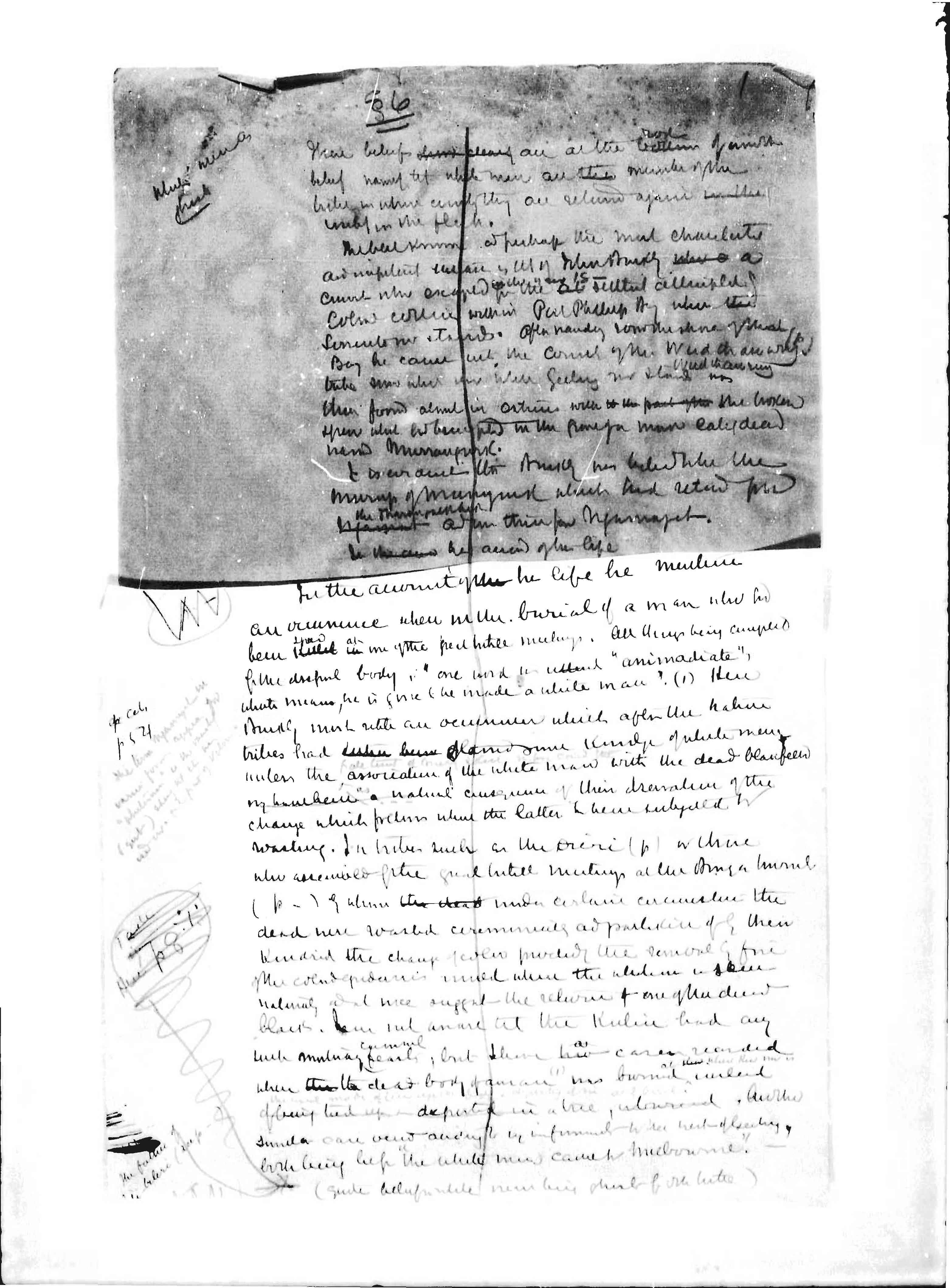Beliefs

Transcription - Page 23
6
[Left margin note]
whats [means?]
ghosts
Section 6 [underlined]
These beliefs [crossed out - show clearly] are as the [??] [crossed out - ?] of another
belief namely that white men are [crossed out - the] members of the
tribe in whose country they are returned again [crossed out - in the]
[??] in the flesh.
The best known and perhaps the most characteristic
and important [instance?] is that of John Buckly [crossed out - who a] a
convict who escaped [that is?] sec 18- from the [crossed out - at] settlment attempted.
[Colony?] [??] within Port Phillip Bay where [crossed out - the]
Sorrento now stands. After wandering round the shore of the [crossed out - ??]
Bay he came into the country of the Wudthaurung (p)
tribe some where near when Geelong now stands Wudthaurung was
then found almost in [extremis?] with [crossed out - to the part of this] the broken
spear which had been placed in the grave of a man earlier dead
named [Murrangurk?].
It is our actions this Buckly/John Buckly was believed to be the
murup of [Murrangurk?] which had returned from
[crossed out - ??] the [Thaurngalkbek?] and [was?] their [crossed out - from] [Ngamajet].
[crossed out - In the case] he [accounted?] of his life.
[Next page]
[Left margin note]
p [54? or 521?]
The term Njamaget for
various forms appear for
"[ghostman?]" is the [??]
(Sect) [??] at the [time?]
and was [??] part of Victoria
In the account of [crossed out - the] his life he mentions
an occurrence when in the burial of a man who had
been [corssed out - killed] speared at one of the special tribal meetinggs. All things being completed
for the [?ful?] body, "one word was [crossed out - uttered] "animadiate",
which means, he is fine to be made a white man". (1) Here
Buckly/John Buckly must relate an occurrence which after the Native
tribes had [crossed out - ?? because] [blamed?] some kinship of white men
unless the association of the white man with the dead black fellow
may have been "a natural consequence of their observation of the
change which [??] where the latter were subjected to
washing. In tribes such as the Dieri (p) or those
who were received for the great tribal meetings at the Bunya Mountains
(p-) by [whom?] [crossed out - the dead] under certain circumstances the
dead were washed ceremonially and [??] of by their
kindred the change of colour provided by the removal by fire
of the [coloured?] epidermis would where the [whiteman?] is [slow? or shown]
naturally and at once suggests the relevance of one of the dead
blacks. I am not aware that the Kulin had any
such mortuary communal feasts, but I have [crossed out - as have] cases recorded
where [crossed out - these] the dead body of a man (1) was burned also [word crossed out] where kin were is instead
of being tied up & deposited in a tree, unburied. Another
similar case [viewed?] and [??] to by informants to the west of Geelong,
both being [belief?] "the white men came to Melbourne". -
(such beliefs of white men being ghosts for other tribes)
[Left margin note]
The father of
Bilibileri (see p -)
Document Details
